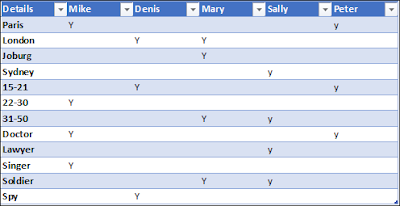Juego Atrapa la Bola
Este juego está totalmente diseñado en Excel con macros VBA y tendrás un minuto para atrapar todas las bolas que puedas mientras van rebotando en un rango rectangular de celdas.Este minijuego del verano se trata de hacer clic encima de la bola mientras se mueve por una hoja Excel. Las bolas están numeradas y al atrapar una bola aumenta el contador de bolas atrapadas y aparece una nueva bola desde abajo, en cualquier ángulo, y comienza a moverse. Los primeros 30 segundos su velocidad es constante y los últimos 30 segundos va acelerando progresivamente.
Esta es la pantalla del juego:
Catch the Ball Game
This game is fully designed in Excel with VBA macros and you will have one minute to catch as many balls as you can while bouncing on a rectangular cell range.This summer minigame is all about clicking on the ball while moves through an Excel sheet. The balls are numbered and when catching one ball increases the caught ball counter and a new ball appears from down, at any angle, and begins to move. The first 30 seconds its speed is constant and the last 30 seconds it accelerates progressively.
This is the game screen:
Descargar el juego
Para poder jugar hay que permitir la edición y habilitar las macros.El juego se puede descargar desde estos dos enlaces:
Download the game
In order to play, you must allow editing and enable macros.The game can be downloaded from these two links:
Microsoft OneDrive: Atrapa la bola - Catch the ball - PW1.xlsm
Sites Google Drive: Atrapa la bola - Catch the ball - PW1.xlsm
Derecho de autor
Yo, Pedro Wave, estoy publicando bajo una Licencia Creative Commons:
Atribución-NoComercial-CompartIgual 3.0 No portada (CC BY-NC-SA 3.0) https://creativecommons.org/licenses/by-nc-sa/3.0/Los términos de la licencia son:
- Atribución: Otorgue el crédito apropiado, manteniendo mi nombre y el nombre de mi blog en el libro de trabajo y el código.
- Compartir igual: Si remezcla, transforma o crea a partir del material, debe distribuir su contribución bajo la misma licencia del original.
- No comercial: Usted no puede hacer uso del material con propósitos comerciales.
Copyright
I, Pedro Wave, am publishing under a Creative Commons License:
Attribution-NonCommercial-ShareAlike 3.0 Unported (CC BY-NC-SA 3.0)Under the following terms:
- Attribution: You must give appropriate credit to my blog, provide a link to the license, and indicate if changes were made.
- ShareAlike: If you remix, transform, or build upon the material, you must distribute your contributions under the same license as the original.
- NonCommercial: You may not use the material for commercial purposes.
Vídeo del juego
Game video
Instrucciones del juego
Si este juego necesita instrucciones, ¡apaga y vámonos!La única instrucción que vale es abrir el editor de VBA y estudiar el código de las macros para aprender a hacer un juego como éste en Excel.
Cambia la forma de la bola haciendo clic en el título del juego.
Cambia de jugador haciendo clic en uno de los diez mejores jugadores.
Cambia el sonido del juego entre: ON - OFF - ONE (sólo suena cuando atrapas la bola).
Cambia la velocidad de la bola: 1 a 10.
¡Que pases un buen verano!
Game instructions
If this game needs instructions, let's get out of here!The only instruction that works is to open the VBA editor and study the macro code to learn how to make a game like this in Excel.
Change the shape of the ball by clicking on the game title.
Change the player's name by clicking on one of the top ten players.
Switch the game sound between: ON - OFF - ONE (only sounds when you catch the ball).
Change the ball speed from 1 to 10.
Have a great summer!









































